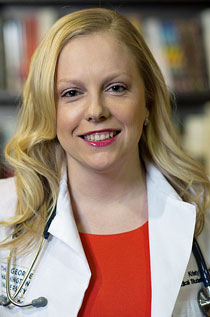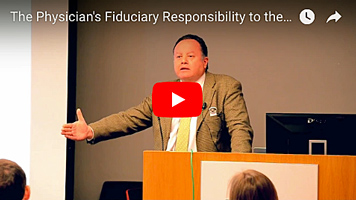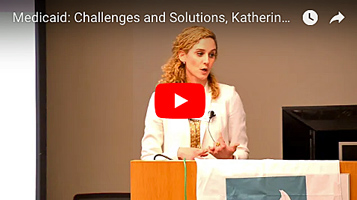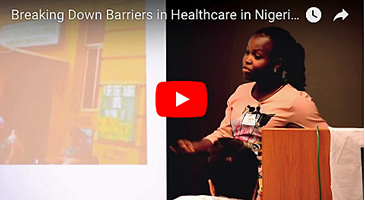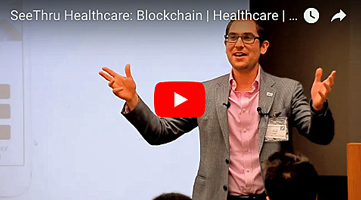Can DPC and Retail Health Coexist?
October 19, 2018 by
Few things in the healthcare market can be as potentially disruptive as retail clinics, and for that reason so much attention is focused on them. A recent survey showed that 91 percent of patients who used a retail clinic reported that they were “satisfied” or “very satisfied” with their visit. With retail clinics being called the healthcare “game-changer”, can DPC compete? Or can retail clinics and DPC live together in harmony?
Read more HERE
Price Transparency’s Effect on Surgery Centers
June 28, 2018 by
My name is Dr. Kristy Hawley, I am a third year surgical resident in the MedStar Health Baltimore program. I have been an active member and participant in Benjamin Rush Institute (BRI) activities since my first year of medical school at The George Washington School of Medicine and Health Sciences. I was recently asked to give some background on how our paper, The Impact of Price Transparency for Surgical Services, recently published in The American Surgeon on price transparency for surgical services came about.
I attended the Free Market Medical Association conference in 2015 as a medical student with the assistance of a BRI scholarship. At this meeting I had the opportunity to tour the Surgery Center of Oklahoma and spend time with Dr. Keith Smith discussing his journey in setting up his very successful and press-worthy surgery center. The unique aspect of the Surgery Center of Oklahoma is that it is completely transparent with its pricing. It was interesting to hear that when trying to determine prices for the operations many of the surgeons actually underestimated their worth. The final list of prices has been quite affordable for patients and the surgeons and anesthesiologists have been quite pleased with their compensation. The Surgery Center of Oklahoma now competes significantly in its local market for surgical patients because it offers transparent pricing, high quality care and high level of patient satisfaction. While I am always a proponent of price transparency, something incredibly unique about this place is that the surgeons, anesthesiologists, and nursing and OR staff seemed very satisfied with their jobs. While they were being fairly compensated, they also had ease with booking cases and were working in a very efficient environment, which allows for more time outside of the OR for outside work or leisu
The leading barrier reported to making prices transparent was discouragement from another practice, hospital, or insurance company.” ~Kristy L. Hawley, MD MPH
The press covered the success of the Surgery Center of Oklahoma in the early 2010s when giving examples of free market solutions versus the Affordable Care Act which was government funded and driven. In 2009 the Surgery Center of Oklahoma posted a list of prices for 112 common surgical procedures online. The premise behind the Surgery Center of Oklahoma is that making prices transparent while also delivering high quality care makes healthcare more affordable to the average American. One article gave the example of an uninsured Florida woman who paid $10,800 for a hysterectomy at the Surgery Center of Oklahoma versus $33,000 quoted by hospitals in Florida. The success of the Surgery Center of Oklahoma inevitably led me to think how useful it would be to share the story of this center beyond stories from the press. After attending the conference in 2015, I connected with Dr. Marty Makary, a pancreatic surgeon at Johns Hopkins who advocates for more transparency in healthcare; and we decided to attempt a survey of surgery centers that have made their surgery prices transparent. We hoped to determine whether or not making prices transparent had an impact on their bottom line and whether or not there were higher levels of patient and physician satisfaction.
While increasing insurance deductibles have prompted some medical centers to initiate transparent pricing, the actual impact of price transparency on surgical volume, revenue, and patient satisfaction is unknown. We found limited information on the barriers to achieving a business model with transparent pricing. Dr. Makary, along with Dr. Ambar Mehta, Tim Xu and Ge Bai from Johns Hopkins, and I worked together to devise a survey that would give some insight into these questions.
We identified ambulatory surgical centers in the Free Market Medical Association database that publicly list prices for surgical services online. Six of eight centers (75%) responded to our data collection inquiry.
- Among five centers that reported their patient volume and revenue after adopting price transparency, patient volume increased by a median of 50 per cent (range 10–200%) at one year.
- Four centers (80%) reported an increase in revenue by a median of 30 per cent (range 4–75%)
- Three centers (60%) experienced an increase in third-party administrator contracts with the average increase being seven new third-party administrator contracts (range 5 2–12 contracts).
- There were three centers (50%) that reported a reduction in their administrative burden, and
- Five centers (83%) reported an increase in patient satisfaction and patient engagement after price transparency.
The leading barrier reported to making prices transparent was discouragement from another practice, hospital, or insurance company. The findings of this preliminary study may help guide medical practices in designing and implementing price transparency strategies.
I share this background on my participation in this recent study to advocate for medical students to get involved in the BRI. The networking opportunities are extremely valuable in terms of finding like-minded individuals who may be interested in topics related to free market medicine and protecting the doctor-patient relationship from overregulation by government interest. My participation in this conference enabled me to make the connection with Dr. Smith and see first-hand a highly functioning outpatient surgical center with transparent pricing. The high level of physician and patient satisfaction at this center is what prompted the idea for the survey. I continue to be interested in the impact of price transparency on lowering costs and increasing quality in patient care and as a surgical resident it will most certainly influence my career as a surgeon.
[et_pb_section bb_built=”1″ _builder_version=”3.0.106″][et_pb_row _builder_version=”3.0.106″][et_pb_column type=”1_2″][et_pb_video _builder_version=”3.9″ src=”https://youtu.be/GrsErrbVquk” /][et_pb_text _builder_version=”3.9″]
In Dr. Fonseca’s talk, From the Trenches: The Fiduciary Responsibility of the Physician to the Patient, he exposes consideration of daily clinical practices that can erode the physician’s fiduciary responsibility in the process of patient care. This includes discussions related to patient care, treatment selection, policies and value frameworks.
[/et_pb_text][/et_pb_column][et_pb_column type=”1_2″][et_pb_cta _builder_version=”3.9″ background_color=”#2d9b8a”]
Rafael Fonseca, MD, is the Getz Family Professor of Cancer and a Professor of Medicine. He is a consultant in the Division of Hematology/Oncology at the Mayo Clinic, AZ and Chair of their Department of Medicine. Dr Fonseca earned his MD at Universidad Anahuac, Mexico. He completed a residency in internal medicine at the University of Miami, FL, and a fellowship in hematology and medical oncology at Mayo Graduate School of Medicine, Rochester, MN. He is a clinical investigator for the Damon Runyon Cancer Research Fund.
[/et_pb_cta][/et_pb_column][/et_pb_row][/et_pb_section]
Medicaid: Challenges and Solutions—Katherine Restrepo
June 13, 2018 by
[et_pb_section bb_built=”1″ _builder_version=”3.0.106″][et_pb_row _builder_version=”3.0.106″][et_pb_column type=”1_2″][et_pb_video _builder_version=”3.5.1″ src=”https://youtu.be/OF4W5_xcgWU” /][et_pb_text _builder_version=”3.5.1″]
Understanding Medicaid is the first step in being able to offer sound solutions to its challenges. There are few people as knowledgeable about all facets of Medicaid than Katherine Restrepo, and BRI was honored to have her speak at our 6th Annual Leadership Conference about common sense approaches to Medicaid reform.
[/et_pb_text][/et_pb_column][et_pb_column type=”1_2″][et_pb_cta _builder_version=”3.5.1″ background_color=”#2d9b8a”]
Katherine Restrepo is the former Director of Health Care Policy at the John Locke Foundation. Before joining the John Locke Foundation, she interned at the Cato Institute under the direction of Michael Cannon, Director of Health Policy Studies. Katherine graduated from McDaniel College with a Bachelor of Arts in Political Science and Spanish along with a minor in Communication. She earned her master’s degree in healthcare administration at the University of North Carolina Gillings School of Global Public Health. She is also a contributor to Forbes. Her research and expertise extends to freedom-advancing healthcare innovations such as Direct Primary Care and telemedicine.
Ms. Restrepo appears frequently on panels and debates in support of free market healthcare reform.
[/et_pb_cta][/et_pb_column][/et_pb_row][/et_pb_section]
Breaking Down Barriers in Healthcare in Nigeria—Aishat Olanlege, MD
June 13, 2018 by
[et_pb_section bb_built=”1″ _builder_version=”3.0.106″][et_pb_row _builder_version=”3.0.106″][et_pb_column type=”1_2″][et_pb_video _builder_version=”3.5.1″ src=”https://youtu.be/QWbpqFSkWkI” /][et_pb_text _builder_version=”3.5.1″]
Aishat Olanlege, MD looks at the many challenges facing her native country of Nigeria, in terms of delivering quality healthcare, improving access, and changing attitudes about modern medicine.
[/et_pb_text][/et_pb_column][et_pb_column type=”1_2″][et_pb_cta _builder_version=”3.5.1″ background_color=”#2d9b8a”]
Dr. Olanlege, a recent graduate of Ibadan University College of Medicine in Oyo State, Nigeria, used the healthcare policy education she received at BRI Leadership Conferences and through self-study to bring healthcare delivery solutions back to her country.
Dr. Olanlege founded BRI’s first international chapter in Ibadan (2014), and has been a featured student-speaker at several BRI Leadership Conferences. She was also interviewed for BRI’s Next Generation Medicine podcast.
[/et_pb_cta][/et_pb_column][/et_pb_row][/et_pb_section]
SeeThru Healthcare: Blockchain | Healthcare | Transparency—Adi Segal
June 13, 2018 by
[et_pb_section bb_built=”1″ _builder_version=”3.0.106″][et_pb_row _builder_version=”3.0.106″][et_pb_column type=”1_2″][et_pb_video _builder_version=”3.5.1″ src=”https://youtu.be/WTGf4ONv_D4″ /][et_pb_text _builder_version=”3.5.1″]
Adi Segal became frustrated when he couldn’t get pricing from a clinic when he sought some routine procedures required for his work. He decided to move from med school into the entrepreneurial realm and founded SeeThru Healthcare, an app designed to give medical service consumers the ability to “shop around in a consumer-friendly way.”
SeeThru is a blockchain enabled platform that is changing the world of healthcare payments, price transparency, and personal medical records.
[/et_pb_text][/et_pb_column][et_pb_column type=”1_2″][et_pb_cta _builder_version=”3.5.1″ background_color=”#2d9b8a”]
Adi Segal, a self-described “recovering med student,” used his medical education, his knowledge of healthcare economics, and experience with non-profits (Leukemia and Lymphoma Society) to create an entrepreneurial answer to consumer medical price transparency. He addressed BRI medical student attendees at the 2017-18 Leadership Conference, describing his startup, SeeThru Healthcare.
[/et_pb_cta][/et_pb_column][/et_pb_row][/et_pb_section]

